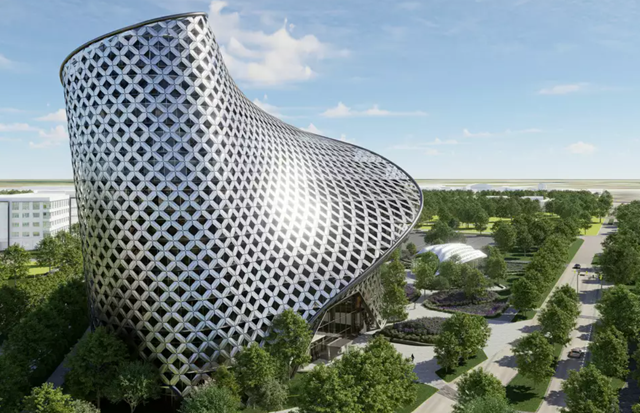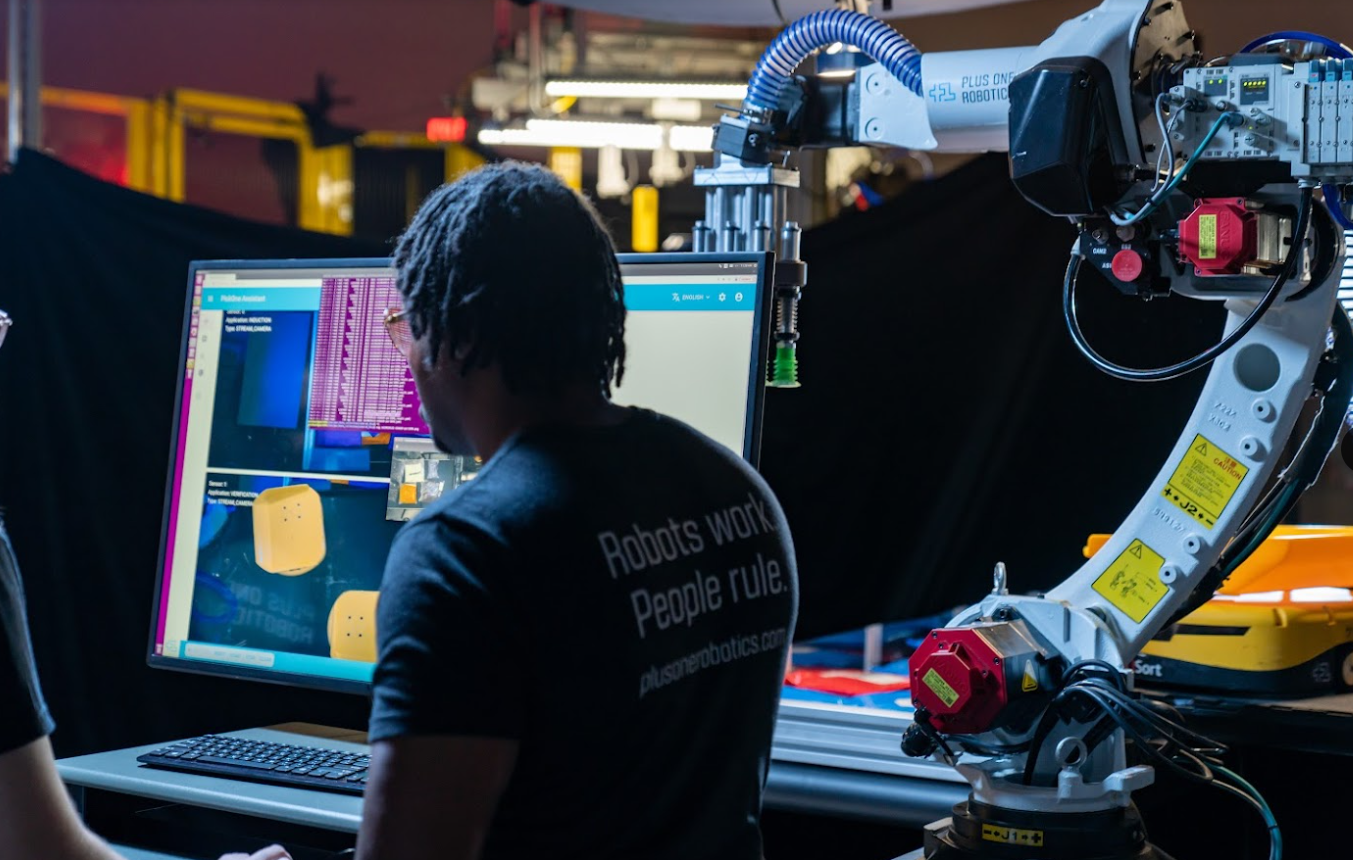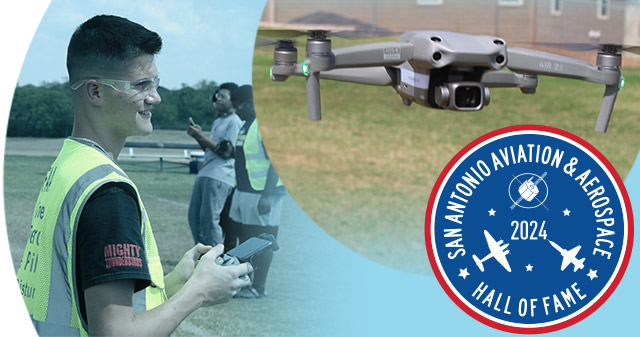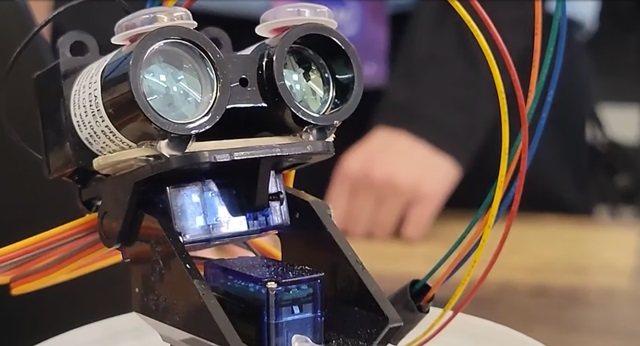Innovations enhance maintenance of aircraft, improve training of aerospace personnel and create new and important uses for widely used cargo platforms.
04-28-2022
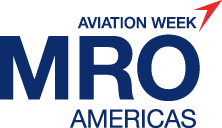
Downloadable Version
SAN ANTONIO, TEXAS — Port San Antonio, the vast technology campus and industrial airport located southwest of the Alamo City’s downtown, is leading efforts to connect locally-developed innovations in digital security, robotics and other applied sciences to advance the maintenance and modernization of commercial and defense aircraft around the world.
This week, the Port led a delegation of businesses and partner organizations who took part in Aviation Week’s MRO Americas 2022 convention in Dallas Texas, held from April 26 to 28. The event is the world’s premiere gathering for technologies that support the maintenance, repair and overhaul (MRO) of the global fleets of aircraft.
San Antonio is one of America’s fastest-growing cities and has diverse and mature industry sectors. In addition to playing a leading role in the development of modern aviation throughout the past century, the Alamo City is home to significant industry clusters that are driving global innovation in an array of other sectors. Among them are cybersecurity, computing, space technology and next generation aeromedical transportation systems.
Port San Antonio’s exhibit at MRO Americas included the following:
LASER- AND ROBOTIC-BASED AIRFRAME MAINTENANCE
XYREC, a Dutch firm that operates its North American headquarters at Port San Antonio, showcased its robotic laser ablation technology alongside developmental partner Southwest Research Institute (SwRI).

The world’s largest industrial robot — which was developed by the two organizations — offers leading edge robotic technology for painting and de-painting large assets, including aircraft and sea vessels.
XYREC’s innovation is comprised of a mobile robot that measures over 72 feet (22 meters) when fully extended. It is equipped with a high-powered laser that rapidly strips paint from aircraft of any size with micron-level precision, including specified layers, without impacting the integrity of the airframe.
The large system stands on multi-directional wheels that allow it to move within a hangar and relocate to other facilities within an aircraft maintenance complex.

Southwest Research Institute used the B727-200 owned by XYREC to conduct tests of the new de-painting technology.
The technology revolutionizes one of the most in-demand services required over the lifespan of a typical airplane. The world’s fleet of over 125,000 aircraft must be repainted on a regular basis to ensure aerodynamic efficiency and corrosion prevention, among other operational considerations. They are also repainted whenever an airline or other operator alters brand design elements or sells the aircraft to another user.
Traditional de-painting involves soaking the airframe with large amounts of solvents, followed by further hands-on scrubbing by technicians. This costly and labor-intensive process carries a significant environmental impact, and the chemicals could pose a health hazard to personnel.
Thanks to the new de-painting process, XYREC’s technology immediately vacuums paint particles as the laser passes over the surface of the aircraft. As the paint is removed, the particles are directly contained in a sack that can be disposed of easily.
Paint stripped from a single wide-body aircraft using XYREC's laser technology generates approximately two pounds (one kilogram) of waste in powder form. This is in stark contrast to traditional methods, in which the same aircraft will require approximately 475 gallons (1,800 liters) of harsh chemicals and an additional 3,700 gallons (14 cubic meters) of water to de-paint.
Furthermore, depending on circumstances, the overall process also eliminates up to 30 tons of carbon dioxide emissions per painted aircraft that would otherwise be generated through chemical-based methods. As the technology is adopted across the world — with a potential market of tens of thousands of aircraft as well as many more naval vessels — the overall environmental benefit to the planet will be significant.
For aircraft operators, XYREC’s technology significantly reduces costs and turnaround time and eliminates the need for storage, handling and disposal of harsh chemicals. That efficiency allows operators and maintenance shops to reduce overhead costs and return passenger, cargo and military aircraft back into service sooner — reducing turnaround time by up to 60 percent.
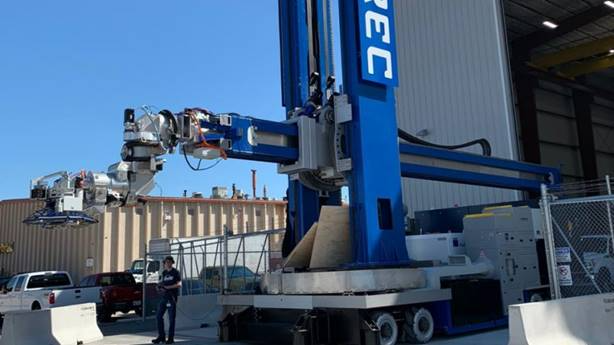
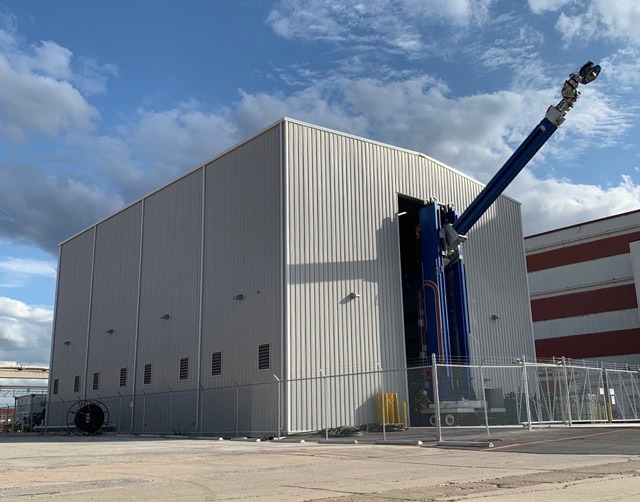
XYREC's robotic technology can measure over 72 feet when the arm is fully extended. Here, the large crane-mounted robot is positioned directly outside the company's new facility at Port San Antonio — XYREC'S first North American operation.
SwRI also showcased sensor-enabled collaborative robotic (cobot) technology that facilitates part inspections, object localization and undertaking certain processes within an industrial environment, such as sanding, painting or welding—known as Scan-N-Plan.
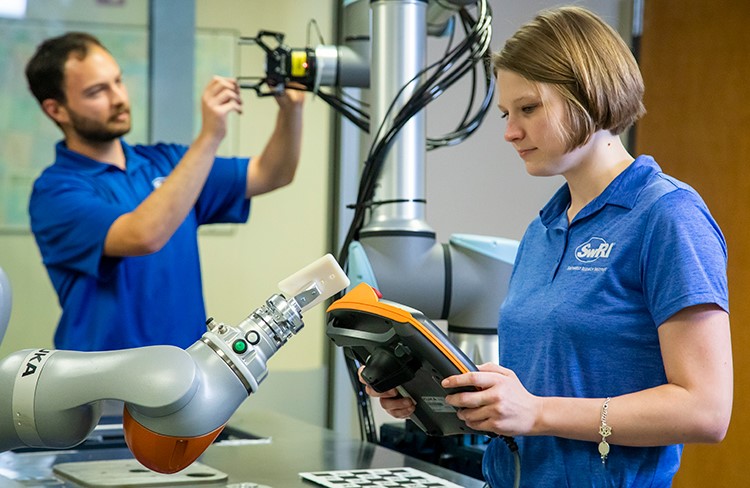
SwRI engineers have been honing robotic technology that involves a 3D camera mounted to a collaborative robotic (cobot) arm. The camera acquires data as the arm manipulates it to scan a nearby object. Open source software is used to assemble this data into a colorized 3D mesh, which is then viewable on a computer screen.
TRANSFORMING THE USES FOR CARGO AIRCRAFT

Founded nearly 30 years ago in San Antonio, exhibitor Knight Aerospace is building a global profile by developing an array of self-contained modular units and other products that can be quickly installed and secured in the cargo hold of different types of aircraft to meet different needs.
Basic units include palletized passenger seating, kitchen galleys and lavatories that significantly increase passenger comfort.
In recent years, the company has been at the forefront of integrating its aerospace expertise with medicine, resulting in the creation of the first-of-its-kind Aeromedical Bio-Containment Module (ABCM).
This self-contained, hospital-caliber medical module allows for the safe transport of highly contagious or critically injured patients on board of an array of large cargo aircraft. In addition, utilization of the patient area in the Module can be expanded to transport critical vaccines. It is the first fully airworthy modular system in the world, offering interoperability on the C-130 and C-17 and without the need for waivers.
The Royal Canadian Air Force (RCAF) is now using the new technology. It will also be capable to evacuate injured or critically ill troops from anywhere in the world and it will similarly support Canada’s international and domestic humanitarian missions.
Knight is in discussions with several other defense and non-governmental organizations who can benefit from the life-saving technology.
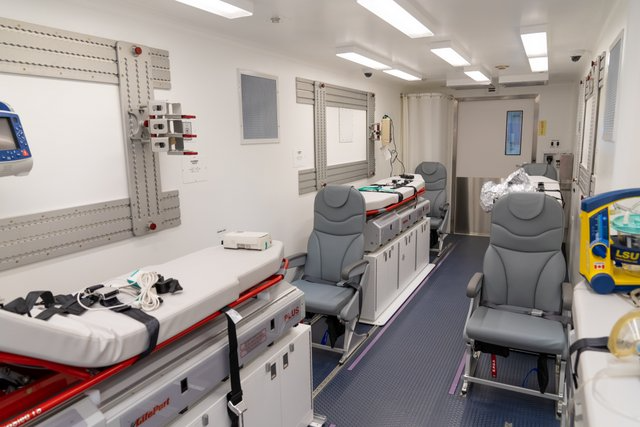
Interior of the medical module.
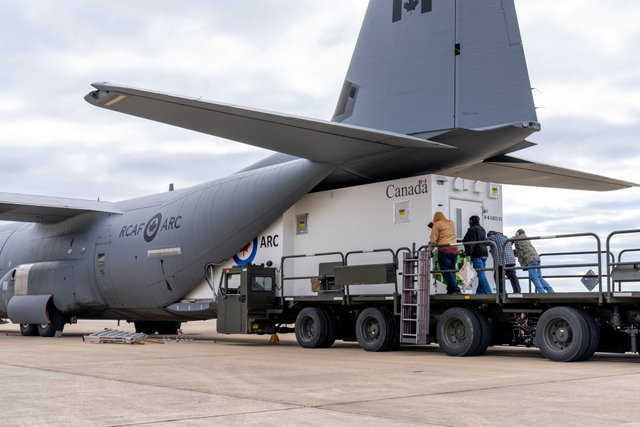
The first medical module as it is loaded onto a Royal Canadian Air Force aircraft at Kelly Field in early 2021 – ready to undertake life-saving missions in Canada and around the world.
Hermetically sealed and negatively pressurized with an independent air supply, the new technology protects the pilots and aircrew outside the module from infection. This also allows aircraft to be returned to service immediately upon unloading the ABCM by eliminating the need for costly and time-consuming decontamination of the plane.
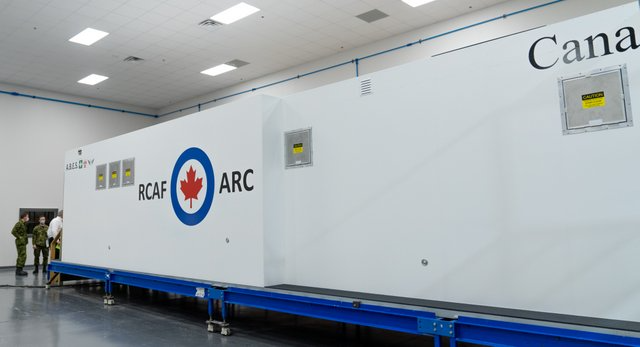
The first completed module inside the Knight facility – located just half a mile from the industrial airport at Kelly Field.
The ABCM is outfitted with state-of-the-art medical equipment and offers a wide range of critical care capabilities. These allow for the treatment of ill patients while in flight, including performing emergency surgery.
Upon landing, the unit can continue operating on the ground, since all that is required is an electric supply such as a gas-powered generator. This capability allows for the expansion of field hospitals and other temporary medical facilities that are dealing with pandemic surges or other emergencies. The ABCM can also provide much-needed care to remote places that currently lack such facilities altogether.
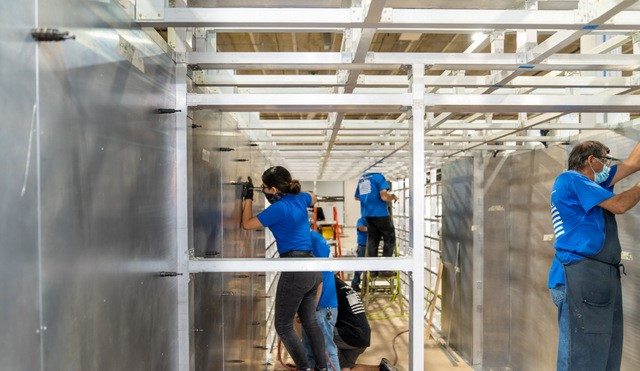
Knight’s modern new large space at Port San Antonio allows the company to conduct research, engineering, fabrication, testing and product demonstrations within a single facility.
The airworthiness of the new technology is assured as it has been built using the highest of military and FAA standards. Knight’s many platforms, including the ABCM, have been proven and certified over the course of the company’s history.
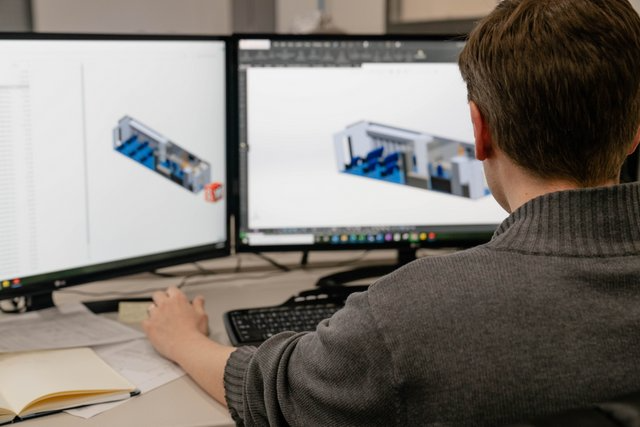
Knight's in-house engineers and other personnel collaborated over many years with defense and medical experts to design and develop the life-saving technology.
As part of that development of the ABCM technology, the company worked in close alignment with numerous defense and medical organizations around the world, including the U.S. Centers for Disease Control (CDC), to develop a product that can provide the highest quality medical care while in flight and can be adapted to meet different needs.

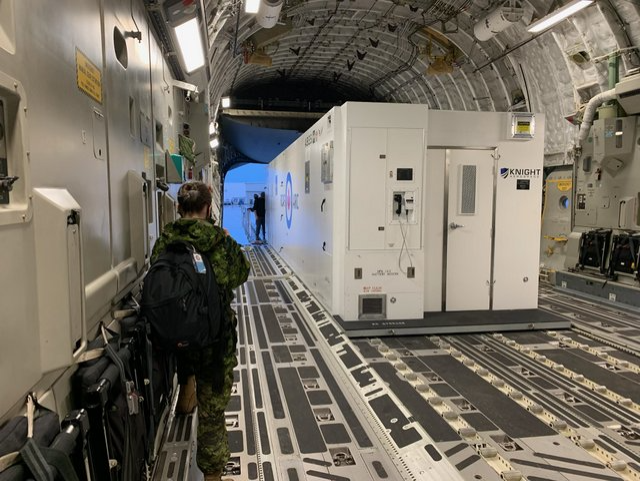
The ABCM operates within different types of cargo aircraft. Shown is one of the unit’s first missions aboard a Royal Canadian Air Force C-17.
Knight began to build its expertise long before the current COVID-19 pandemic. Its medical team is led by Dr. Paul K. Carlton Jr., a retired U.S. Air Force Surgeon General who is one of the world’s top experts in medical evacuation. Among his accomplishments, he is the developer of Critical Care Air Transport Team (CCATT) currently used by the U.S. Air Force and military forces around the world and serves as an advisor to Knight. The company’s Chief Medical Officer, Dr. Jay Johannigman, is a colonel in the U.S. Army Reserves with decades of military medicine experience, including as a leading combat surgeon.
VR/AR TRAINING

The IMG Studio, a San Antonio-based woman-owned creative agency specializing in video game development for educational and marketing purposes, is building a flight simulation video game to help support recruitment and training of U.S. Air Force personnel—particularly those focused on pursuing STEM-based careers.
The project was awarded a Phase I Small Business Innovation Research (SBIR) contract from AFWERX—the Air Force’s innovation acceleration program.
The company is currently working towards a Phase II AFWERX contract which will fund further development of the game. Unlike traditional flight simulation games, the one being developed by IMG allows users to design, test, and build different military aircraft based on a set of guidelines and goals. The game challenges players to consider different criteria when engineering their aircraft. Challenges may include staying below a specified maximum weight or financial cost while still fulfilling different mission objectives—including how far the plane can fly without refueling, how fast the plane can fly, and how much runway each plane requires for takeoff.
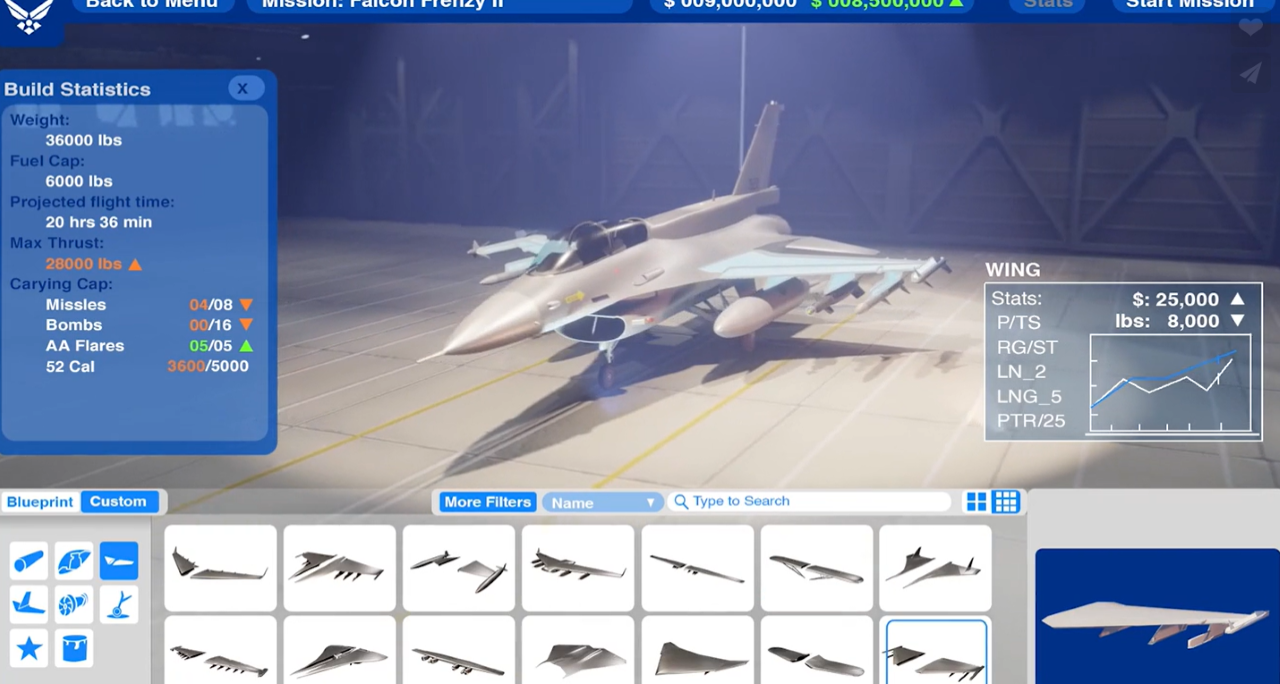
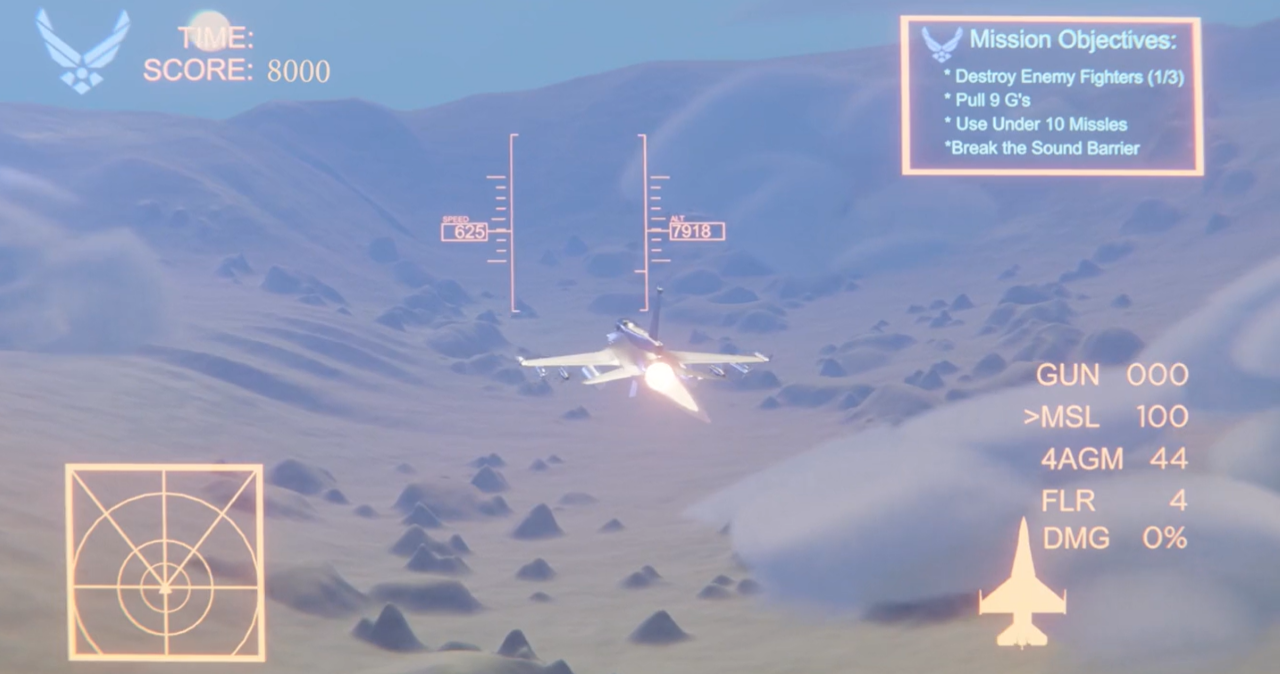
The flight simulator being developed by IMG Studios for Air Force use allows players to first “build” their aircraft and, subsequently, test the platform’s performance based on numerous physics, mechanical and engineering criteria.
Also of interest to the aerospace community, particularly operators of hangars and large industrial spaces for maintenance, repair and overhaul (MRO) operations, IMG Studios has developed virtual reality (VR)-based training programs that teach employees how to detect potential hazards in an industrial environment. Wearing a VR headset, the user is challenged to identify safety hazards in the factory. IMG is currently working with the San Antonio Toyota manufacturing plant to expand the safety training modules.
AN INNOVATION DESTINATION
At MRO Americas, the Port highlighted its just-launched state-of-the-art innovation center: Tech Port Center + Arena. The facility—spanning over 130,000 square feet—is a strategic site like no other in the nation that will leverage human capital, industry expertise and a broad range of capabilities in education.
This collaborative space will accelerate the development of new technologies and serve as a showroom to sell innovations similar to those showcased at MRO Americas and connect them to global markets, particularly in the aviation, energy, defense, manufacturing and biomedical sectors.
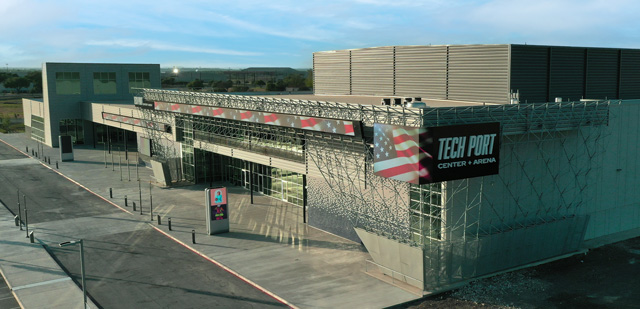
Tech Port Center + Arena as it approached completion in late April (above). The large building provides multiple spaces to host different types of activities, including the following: conventions, product launches and other large gatherings; spaces for different stakeholders to prototype and showcase new technologies; meeting rooms and classrooms; and spaces, including a state-of-the art LAN gaming center and adjacent food hall, for technology enthusiasts to gather and socialize (below).
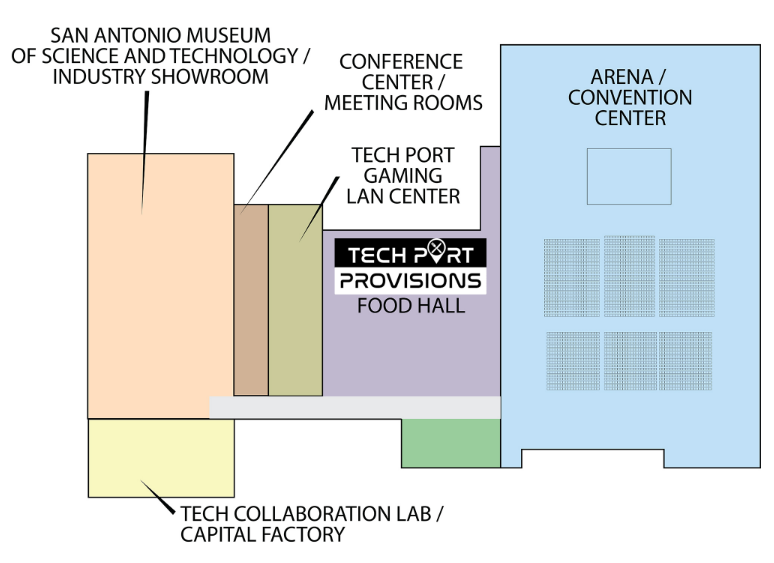
Components include a 3,200-seat arena/conference venue, a publicly accessible industry showroom and collaborative spaces where different industries can work together in the development of new applied technologies in aerospace and other disciplines.
The innovation center provides industries and partners on the Port campus and beyond with a place to conduct training and public demonstrations to strengthen collaborations, increase the understanding of emerging technologies, particularly the application of new breakthroughs to enhance capabilities in mature sectors like aerospace and aviation, and serve as a showcase for new approaches that can be adopted by others.

Located in the hear of the Port’s 1,900-acre industrial campus, the Tech Port Center + Arena innovation center is surrounded by leading names in aerospace, education, defense and other advanced industries.

A key component of the facility is the participation of Capital Factory. The Austin-based accelerator is establishing its Center for Defense Innovation (CDI) within Tech Port Center + Arena’s collaborative lab space.
Programming led by Capital Factory will allow an array of startups to better collaborate with one-another, research partners, mature enterprises, the Department of Defense and other entities. Similarly, activations by Capital Factory can rely on the lab space as well as the museum, classroom, LAN gaming center and arena to showcase innovations developed by its stakeholders to an array of audiences, including potential buyers regionally, nationally and globally.

Capital Factory members in Austin meet with and demonstrate some of their innovations to Apple CEO Tim Cook in 2017. The accelerator’s presence at Tech Port Center + Arena will similarly allow local startups to collaborate and share their technologies with an array of potential buyers, including the Department of Defense and mature industries.
It is also an important platform to accelerate and significantly grow regional educational initiatives focused on aerospace and an array of other technologies—from innovative STEM programs for young people launched by Port-based San Antonio Museum of Science and Technology (SAMSAT) to advanced training for seasoned professionals within the U.S. Air Force and other entities.
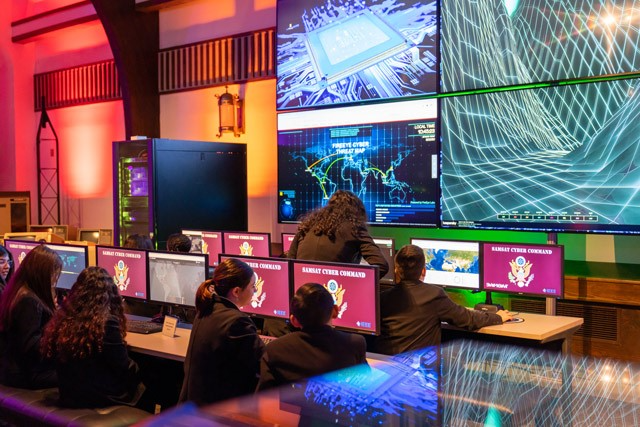
Area middle schoolers take part in educational programs at SAMSAT’s security operations center simulator in early 2020. An enhanced version will be installed in the museum’s new space at Tech Port Center + Arena later this year.







